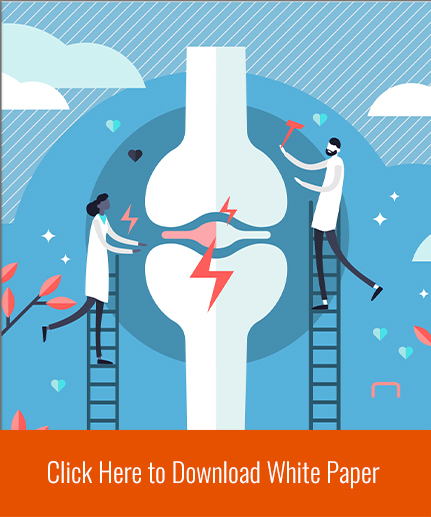Free Case Evaluation

Risk Factors for CRPS
Recognizing the risk factors for Complex Regional Pain Syndrome
When someone develops Complex Regional Pain Syndrome (CRPS), one of the most frustrating issues is that it isn’t always clear why it happened. While medical science has made progress, CRPS is still a mystery in many ways. What we can do, however, is look at the risk factors, those conditions or traits that make CRPS more likely after an injury. Understanding these helps patients, doctors, and lawyers see the warning signs earlier, manage expectations, and take steps to reduce the risk wherever possible. Below, we break down what researchers currently believe are the risk factors for CRPS, how strong the evidence is, and what that means for you if you’re recovering from trauma or surgery.
What does “risk factor” mean?
A risk factor is something that increases the probability of getting a condition, but it is not a guarantee. In other words:
- Having a risk factor doesn’t mean you will get CRPS.
- Not having obvious risk factors doesn’t mean you won’t get it.
Risk factors are useful because they help doctors identify people who might need closer monitoring, earlier intervention, or preventive care.
Major risk factors for CRPS
Based on scientific studies, certain risk factors are more common than others. Here are the ones to pay close attention to:
- One of the clearest findings is that CRPS develops more often in women than in men. Some reports suggest the risk is especially higher among postmenopausal women. Why? We don’t fully know. Hormonal differences, vascular responsiveness, immune functions, or nerve repair capacities may differ between genders. However, the bottom line is that being female is a recognized risk factor.
- Most CRPS cases begin after some type of injury. But not all injuries are equal when it comes to risk. Some kinds of damage appear more risky than others, including fractures (especially of the wrist or ankle), dislocations and intra-articular fractures, crush injuries or blunt force trauma, surgery, and multiple injuries. However, while these injuries are common triggers, only a small fraction of people with these injuries go on to develop CRPS.
- One interesting risk factor is how painful the injury is in the early days. Some studies show that when patients report high pain scores (i.e., five or more out of 10) in the first few days after surgery or injury, the risk of developing CRPS increases. This suggests that the way the nervous system reacts immediately after trauma can influence whether CRPS develops.
- Keeping a limb immobile for a long time (like in a tight cast or splint) appears to add to the risk. Some studies point out that long immobilization, especially of joints, can impair nerve input, blood flow, or circulation, making the region more vulnerable. For example, wrist fractures that are immobilized for long periods of time, or casting that’s too tight, have been linked to greater CRPS risk.
- Age as a risk factor is less consistent, but more recent studies indicate that older patients may have a somewhat higher risk, particularly after surgery. One study found that in patients after surgery, older patients faced an increased CRPS incidence in mid- to late-postoperative periods.
- Certain medical and biological traits can set the stage for higher vulnerability. These include poor nerve health, autoimmune or inflammatory diseases, smoking/vascular disease/poor circulation, and genetic or familial disposition.
- While these are more controversial or weaker as direct link factors, many researchers believe that psychological or emotional stress can interact with biological factors to raise the risk of CRPS. Some studies suggest that preexisting anxiety, depression, or psychological stress can modestly increase the risk, but the evidence is often weak or mixed. Other studies find that catastrophizing (thinking that the pain will be unbearable) or high emotional distress can influence how the nervous system responds. Psychological stress is likely a modifier and not a primary cause. In other words, stress can worsen or amplify processes, but it probably doesn’t, on its own, cause CRPS.
Recent research continues to refine the understanding of risk. One 2024 study of patients after surgery (especially orthopedic surgery) looked at what they called “dynamic risk factors”, those that change over time. Key findings included:
- Age and female gender remained significant risk factors.
- Patients who engaged in manual labor had a higher CRPS risk at 6 and 12 months.
- More complex fractures and internal fixation (surgical hardware) may increase the chances.
- Patients with osteoporosis showed a higher risk mid to late in recovery.
- Psychological measures (such as anxiety and depression scores) correlated with CRPS incidence.
- Early physical therapy or occupational therapy might help reduce risk (though this remains to be studied more fully).
These findings reinforce the idea that CRPS risk is not static but changes as healing proceeds, and that medical and rehabilitative management may influence risk.
What don’t we know about CRPS?
Even though many studies point to these risk factors, it’s important to be careful about how we interpret them.
- Studies differ in how they define CRPS, which criteria they apply, their sample sizes, and whether they’re retrospective versus prospective. Because of this, some “risk factors” are weakly supported.
- Because CRPS is relatively rare, even in injured populations, it’s hard to get very large cohorts and strong statistical power.
- Some risk factors might overlap. For instance, older people are more likely to have vascular disease, which is itself a risk. Separating the causes from associations can be challenging.
- We don’t yet have a clinical tool or score that reliably tells which injured patients will develop CRPS.
- Some factors (like pain intensity, psychological state, and rehabilitation) evolve during recovery. These changing factors might matter more than the initial ones.
Because of these uncertainties, many risk factors remain possible or probable, not guaranteed.
If you or someone you love is recovering from an injury, surgery, or trauma, and you see the warning signs of CRPS, especially if you match some of the risk profiles above, don’t wait. The earlier CRPS is recognized and addressed, the better your chances of preserving function and preventing severe progression.
At the CRPS Law Firm, we’re more than attorneys. We want to help you understand how risk factors, medical care, and legal strategies tie together. If you’re concerned that the risk factors in your case weren’t managed, or you need help evaluating whether your CRPS was preventable or worsened by another person’s actions, let us review your story. Call or contact us today for a free consultation. We’re here to help you evaluate your situation, understand the risks, and protect your rights.

